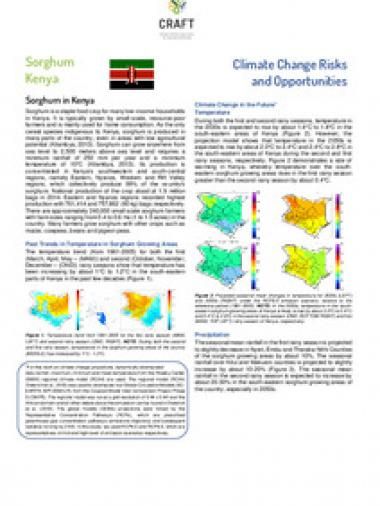Sorghum Kenya: Climate risk assessment

Sorghum is a staple food crop for many low-income households in Kenya. It is typically grown by small-scale, resource-poor farmers and is mainly used for home consumption. As the only cereal species indigenous to Kenya, sorghum is produced in many parts of the country, even in areas with low agricultural
potential (Kilambya, 2013). Sorghum can grow anywhere from sea level to 2,500 meters above sea level and requires a minimum rainfall of 250 mm per year and a minimum temperature of 10°C (Kilambya, 2013). Its production is
concentrated in Kenya’s southwestern and south-central regions, namely Eastern, Nyanza, Western and Rift Valley regions, which collectively produce 99% of the country’s sorghum. National production of the crop stood at 1.9 million bags in 2014. Eastern and Nyanza regions recorded highest production with 761,414 and 757,862 (90 kg) bags respectively. There are approximately 240,000 small scale sorghum farmers with farm sizes ranging from 0.4 to 0.6 Ha (1 to 1.5 acres) in the country. Many farmers grow sorghum with other crops such as maize, cowpeas, beans and pigeon peas.
Citation
Demissie T, Duku C, Groot A, Muhwanga J, Nzoka O, Recha J, Osumba J. 2020. Sorghum Kenya: Climate risk assessment. Climate Resilient Agribusiness for Tomorrow (CRAFT).